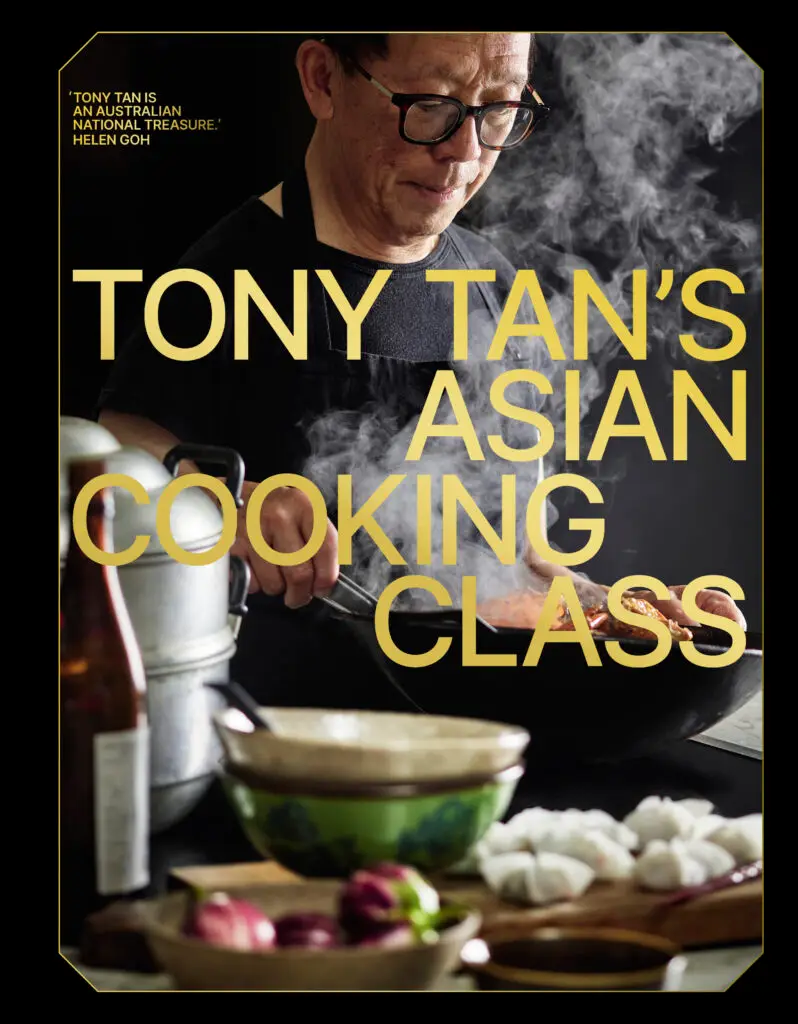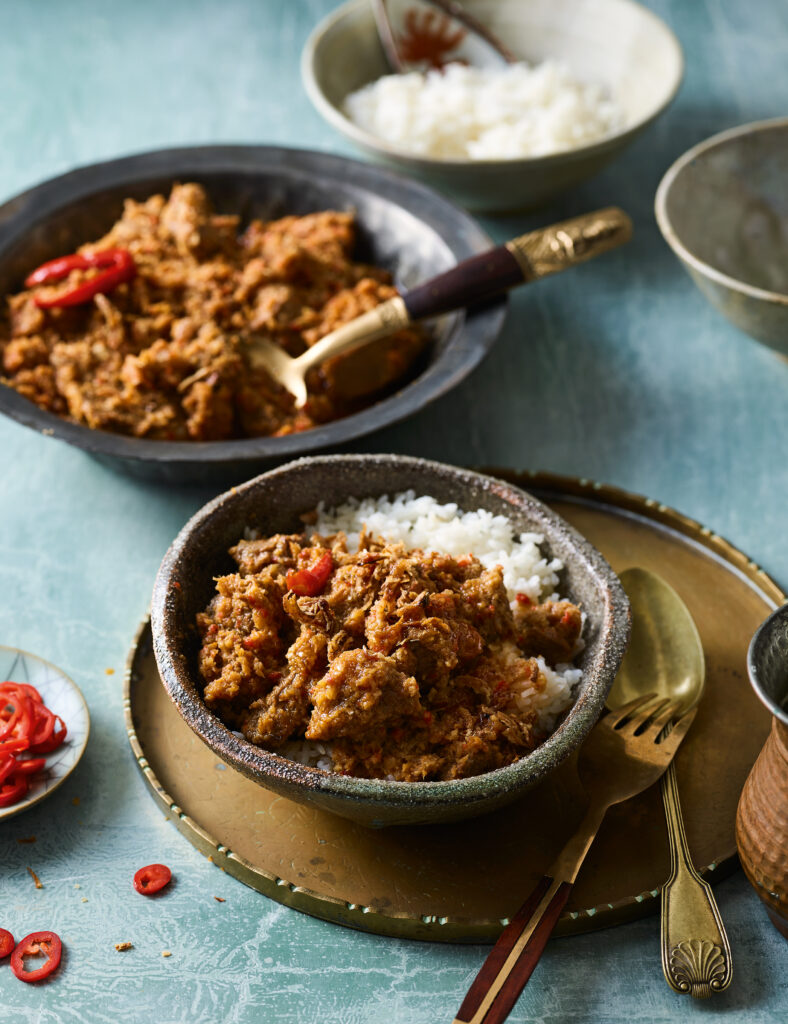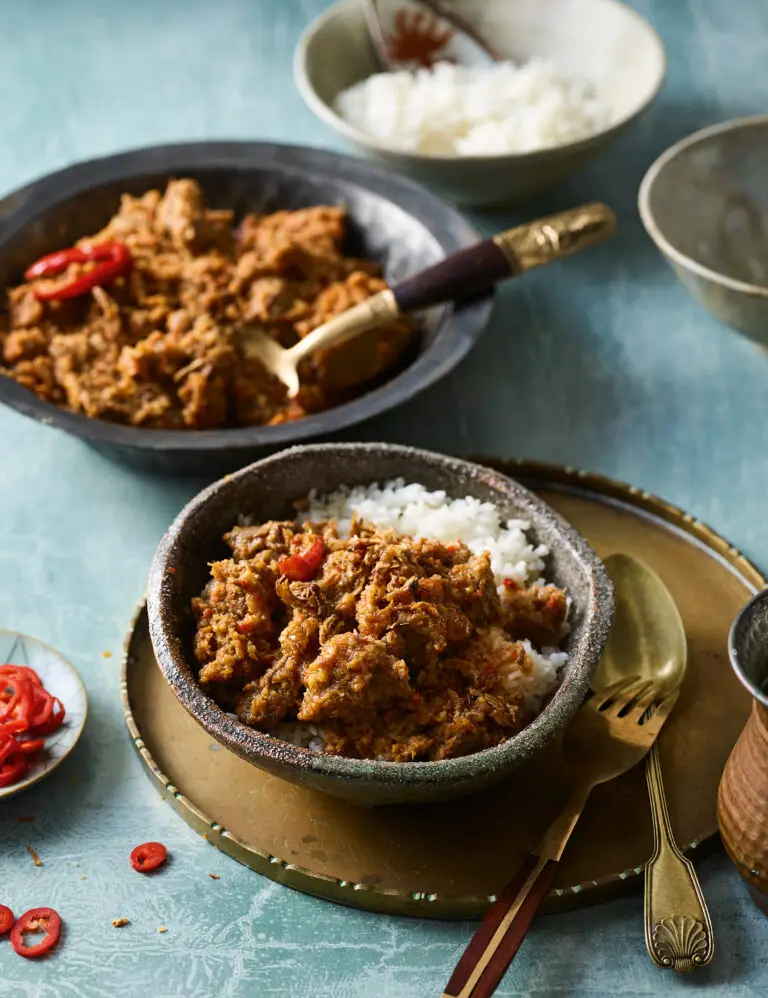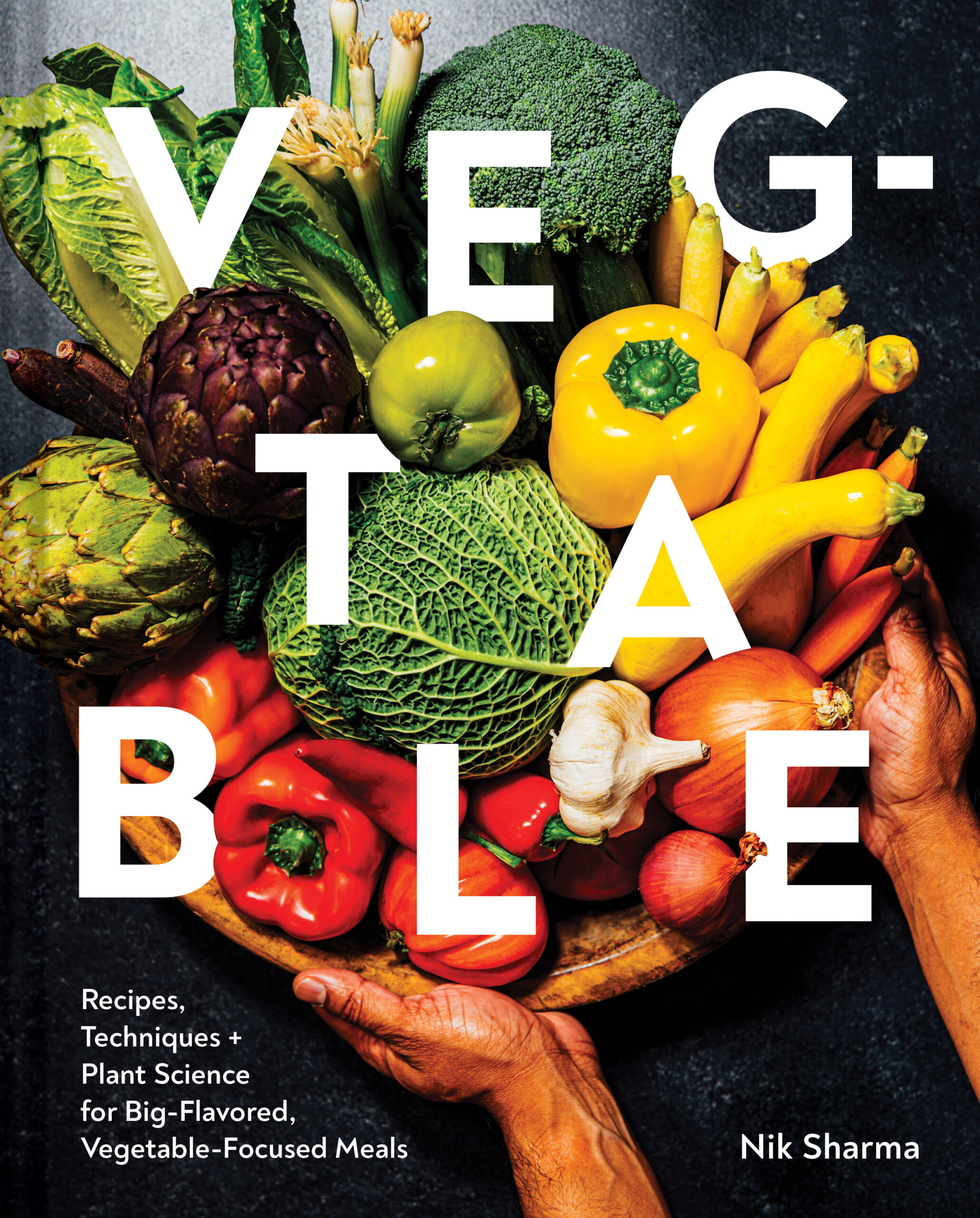

Beef Rendang: Indonesia’s Legendary Slow-Cooked Dish
Few dishes capture the heart of Indonesian cuisine quite like beef rendang. Originating with the Minangkabau people of West Sumatra, rendang is more than just a recipe—it’s a cultural symbol, a preservation technique, and one of the world’s most celebrated dishes. Voted the World’s Best Food by CNN Travel readers in both 2011 and 2017, and recognized by UNESCO as part of Indonesia’s intangible cultural heritage, rendang represents centuries of culinary wisdom passed down through generations.
A Dish with Deep Roots
The history of rendang stretches back at least to the 16th century, when it was mentioned in Malay texts describing feasts and royal ceremonies. The Minangkabau, known for their matrilineal culture and far-reaching trade networks, developed rendang as a practical food for long journeys. Properly prepared, the dish is so dry and heavily spiced that it could last for weeks without refrigeration, making it an ideal provision across Sumatra’s humid tropics.
What Makes Rendang Unique?
Unlike many curries, authentic rendang is not meant to be saucy. The dish begins with beef (traditionally water buffalo) simmered slowly in a mixture of coconut milk, fresh aromatics, and spices. Shallots, garlic, ginger, galangal, lemongrass, and chilies are pounded into a paste and cooked until fragrant, then combined with coconut milk and spices like coriander, cumin, cinnamon, cloves, nutmeg, and turmeric.
As the beef simmers, the liquid reduces until the coconut milk splits and the natural oils begin to fry the meat. This process, which can take 3 to 4 hours, transforms the beef into something magical: tender, caramelized, and infused with layers of flavor. The final dish is dry, with the meat coated in a dark, aromatic crust; this is what distinguishes rendang from kalio, a wetter, less reduced variant.
Variations Across Indonesia
Though beef rendang is the most famous version, there are countless variations across Indonesia and Malaysia:
- Beef or Water Buffalo Rendang – the traditional preparation, served on ceremonial occasions.
- Chicken Rendang (Rendang Ayam) – popular in everyday cooking.
- Lamb, Duck, or Goat Rendang – regional variations often tied to availability.
- Vegetarian Rendang (Rendang Nangka or Jackfruit Rendang) – common in West Sumatra, where young jackfruit absorbs spices beautifully.
Every region has its own balance of spices, some emphasize heat with more chilies, while others lean into sweetness with more coconut.
Science of Slow Cooking
From a food science perspective, rendang is a masterclass in Maillard reactions and fat-based flavor delivery. As the coconut milk reduces and its oils separate, they carry fat-soluble compounds from spices like cloves, cinnamon, and nutmeg deep into the beef. Meanwhile, the long cooking time allows collagen in the beef to break down into gelatin, creating a tender, juicy texture.
The dryness of rendang also serves a preservative function: with little water left behind and an abundance of antimicrobial spices, the dish naturally resists spoilage. This explains why rendang was historically used for travel and trade.
Why Rendang Isn’t Just a Curry
Western food writers often describe rendang as an “Indonesian curry,” but that term doesn’t capture its essence. Curries typically feature a sauce or broth, whereas rendang is closer to a slow braise that ends with the meat almost stir-fried in its own spice crust. For the Minangkabau, rendang is not just food—it’s a ritual dish tied to community, resilience, and heritage.
How to Serve Rendang
Beef rendang is most commonly served with steamed white rice, but it also pairs beautifully with:
- Ketupat or Lontong – compressed rice cakes.
- Urap – a Javanese vegetable salad with spiced coconut.
- Sambal – chili paste for extra heat.
- Pickled vegetables – to balance the richness.
Because it keeps so well, rendang often tastes even better the next day as the spices continue to meld.
The Global Journey of Rendang
Thanks to migration and trade, rendang has spread across Southeast Asia, especially Malaysia and Singapore, where it remains a festive dish. Today, it’s a staple at Indonesian restaurants worldwide, celebrated for its complexity and comforting richness.
At its core, rendang embodies the essence of Indonesian cooking: patience, bold flavors, and the transformation of humble ingredients into something extraordinary.
Tony Tan’s Asian Cooking Class
I’m thrilled to share this authentic beef rendang recipe from chef Tony Tan’s Asian Cooking Class cookbook here on the blog. Tony Tan is a highly respected voice in Asian and Indonesian cooking, known for his ability to honor tradition while making recipes approachable for the modern home cook. His rendang captures the depth and complexity of this iconic West Sumatran dish—rich in coconut milk, fragrant with spices, and the result of hours of slow cooking that transform beef into something truly extraordinary.
I often look to Tony’s recipes when I want both reliability and cultural depth. Rather than rewriting this Indonesian classic, I wanted to highlight Tony Tan’s beef rendang exactly as he shares it, so you can experience it in its most authentic form. Sharing his work here is also my way of celebrating not just the dish, but the generations of tradition behind it.
If you’re new to rendang or searching for a trusted recipe, this version is one to bookmark. It’s a dish that tells the story of Indonesian heritage, flavor, and slow cooking at its finest.
If this recipe inspires you, I highly recommend picking up your own copy of Tony Tan’s Asian Cooking Class. It’s filled with beautifully written recipes that showcase his deep knowledge of Asian cuisines and his gift for teaching. You can also explore more about Tony’s journey and classes through Tony Tan’s Cooking School, where his passion for food and sharing knowledge truly shines.
Print
Tony Tan’s Beef Rendang
5 Stars 4 Stars 3 Stars 2 Stars 1 Star
No reviews
Possibly the most magnificent Indonesian culinary export, beef rendang is the contribution of the Minangkabau people from West Sumatra, of which Padang is the capital. Properly cooked, this dish – first mentioned around the 1550s – is fit for a king, which is why it is served on festive occasions. Traditionally, rendang must be dry – the coconut-based sauce is heavily reduced by long, slow cooking so it eventually ‘fries’ the meat. The result is succulent, richly complex and delicious, whether it’s made, as is common, with water buffalo or beef, chicken, lamb or even jackfruit. If you are served rendang with some residual sauce, it is a variant called ‘kalio’ – calling it a curry is a mistake Western food writers often make.
- Yield: 6
Ingredients
2 lemongrass stalks (white part only), finely chopped
1¼ in [3 cm] piece ginger (about 1 oz [30 g]), peeled and chopped
4 to 5 thin slices fresh galangal (about ¾ oz [20 g]), peeled and finely chopped
1 large onion, or 6 shallots (eschalots), finely chopped
6 to 10 long red chillies, coarsely chopped
5 garlic cloves
⅓ cup [80 ml] neutral oil
1 lb 9 oz [700 g] beef oyster blade, cut into 5 cm (2 inch) cubes
1¼ oz [35 g] desiccated coconut, dry-fried in a pan until golden brown
2 cups [500 ml] coconut milk
1 tsp superfine sugar
Salt, to taste
Instructions
- Combine the lemongrass, ginger and galangal in a food processor and blend to a fine paste. Add the onion, chilli and garlic and blend again until a coarse paste forms.
- Heat the oil in a heavy-based saucepan over medium heat, add the paste and fry, stirring, for about 8 to 10 minutes, or until the oil separates into a gorgeous red.
- Add the beef and fry, turning occasionally, until lightly browned all over (5 to 6 minutes).
- Add the coconut and fry for another minute, then add the coconut milk, sugar and 2 cups [500 ml] water.
- Bring to the boil, stirring frequently to prevent curdling, then reduce the heat to low and leave to bubble gently, stirring now and then, until the beef is tender and the coconut milk much reduced (about 1.5 to 2 hours).
- Once the coconut milk is beginning to turn to oil, remove the beef from the saucepan. Continue to stir the sauce (be careful; it will spit) until it is almost evaporated and almost dry, about 5–10 minutes.
- Return the beef to the saucepan, stir gently, season to taste with salt and serve with rice.
Notes
Some notes on conversions
- A flat-iron steak or butlers’ steak is the equivalent of a beef oyster blade.
- The 2 cups [500 ml] conversion is correct.

